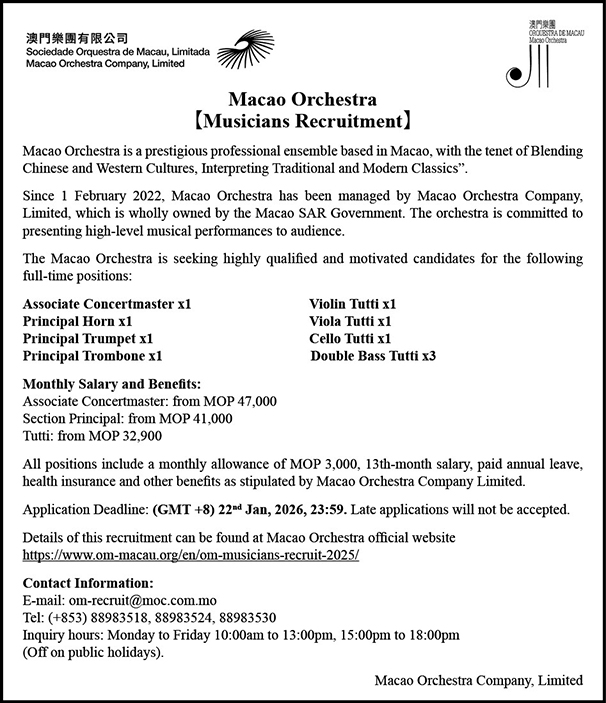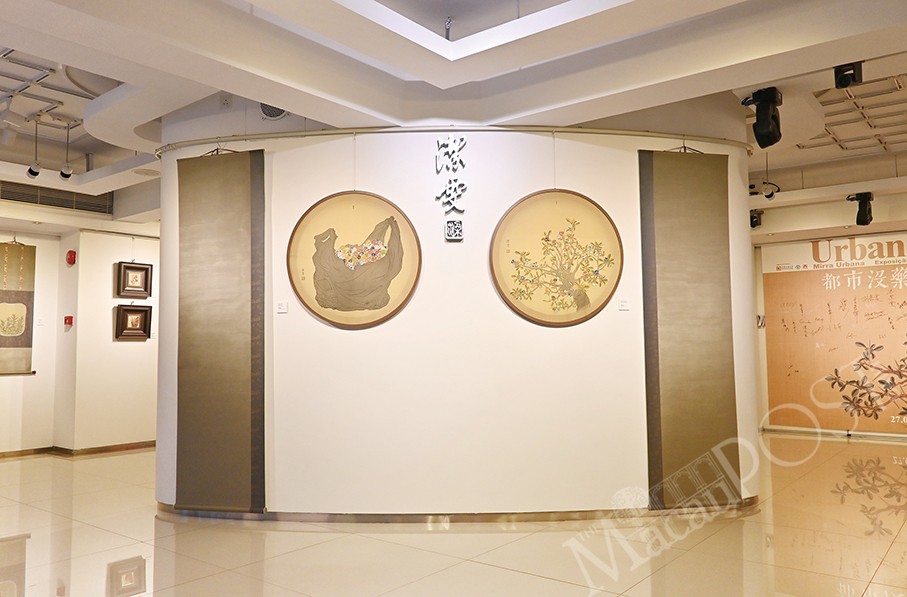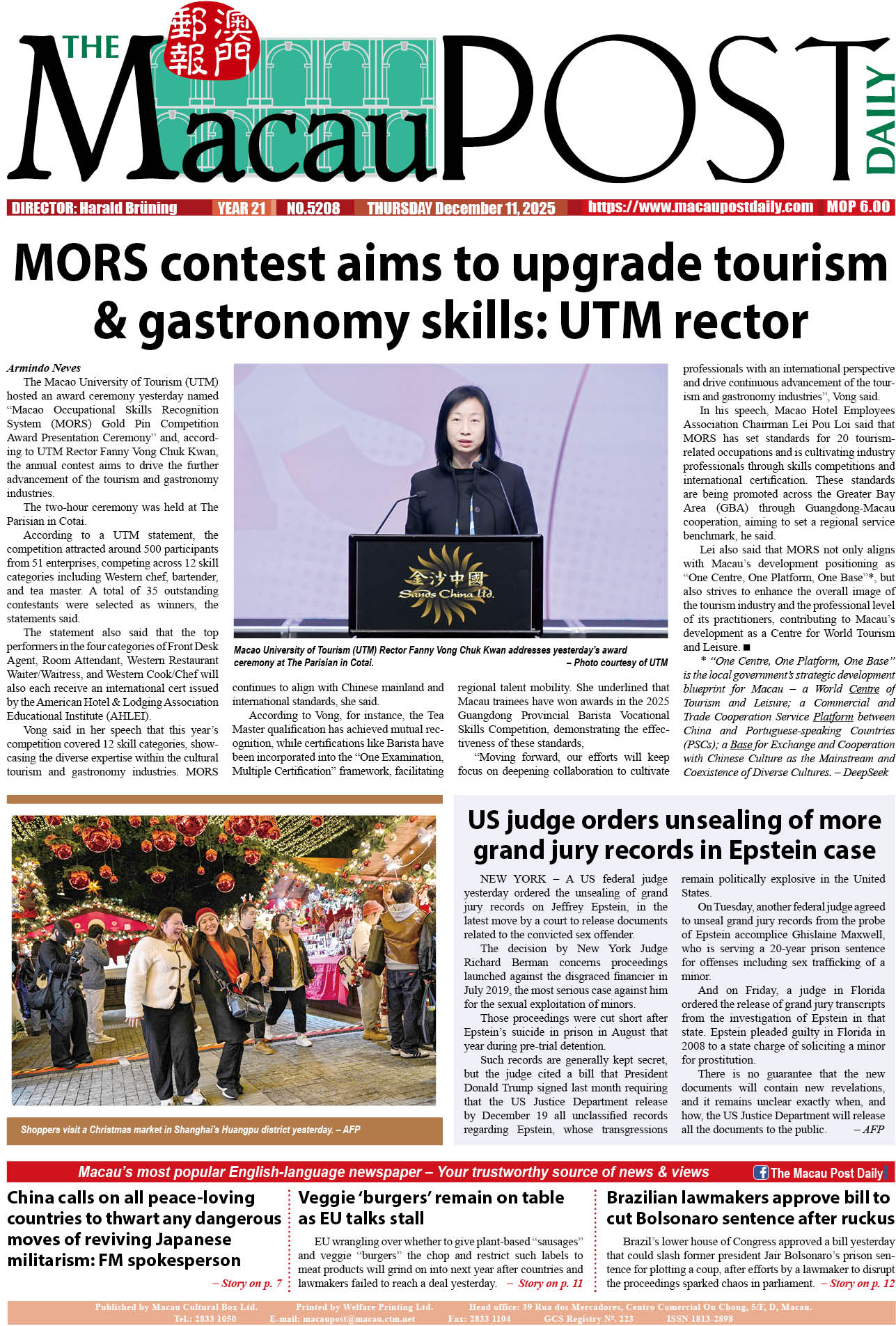Commentary by Swallow Xu*
First I was joyfully dining at a Chinese vegetarian eatery run by two Chinese ladies and three minutes later I was sampling yummy Portuguese pastries managed by a hospitable Filipina lady and owned by a Portuguese guy just next door, in the same hidden alley in the city centre.
Is Macau a city of multi-cultures? Please pause and think about it.
For me, it’s both ‘yes’ and ‘no’.
Yes, because, historically, the city was truly China’s first window to the world and the world’s gateway to the mainland, for nearly five centuries, in terms of trade as well religious, scientific and cultural exchanges. Macau’s importance as a foreign trade port only declined in the 1840s with the rise of Hong Kong. Both Western-born and Chinese Jesuits played an important role in facilitating East-West exchanges from the 16th to 19th centuries in the Ming and Qing dynasties using Macau as a stepping stone or training hub; such Western luminaries included Italian Mateo Ricci, German Johann Adam Schall von Bell and Italian Giuseppe Castiglione who finally worked in the Ming and Qing imperial courts as the emperors’ advisers or artists. Wu Li, a prominent Chinese artist and Jesuit, came to Macau to study Latin and Christianity in the 17th century when he was ordained one of the first three Chinese Jesuit priests, and he went on to serve rural communities for 30 years.
Look, Macau certainly deserves its claim to be a melting pot of cultures which is historically important.
But today it may not be so – at least not deep in its soul – if you delve deep into the city. Apart from the side-by-side existence of Chinese- and Portuguese-style buildings and monuments, apart from the superficial co-existence of peoples and their respective foods and cultures, I feel that there’s no real integration and interaction between the different ethnic groups in Macau.
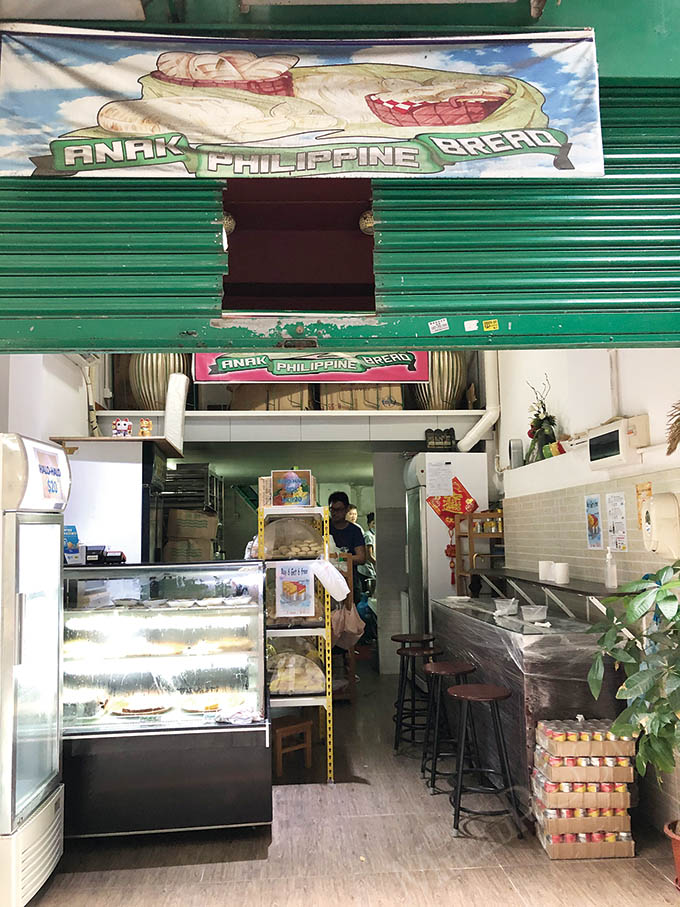
This photo taken early this month shows a Filipino bakery in Rua da Alfândega.
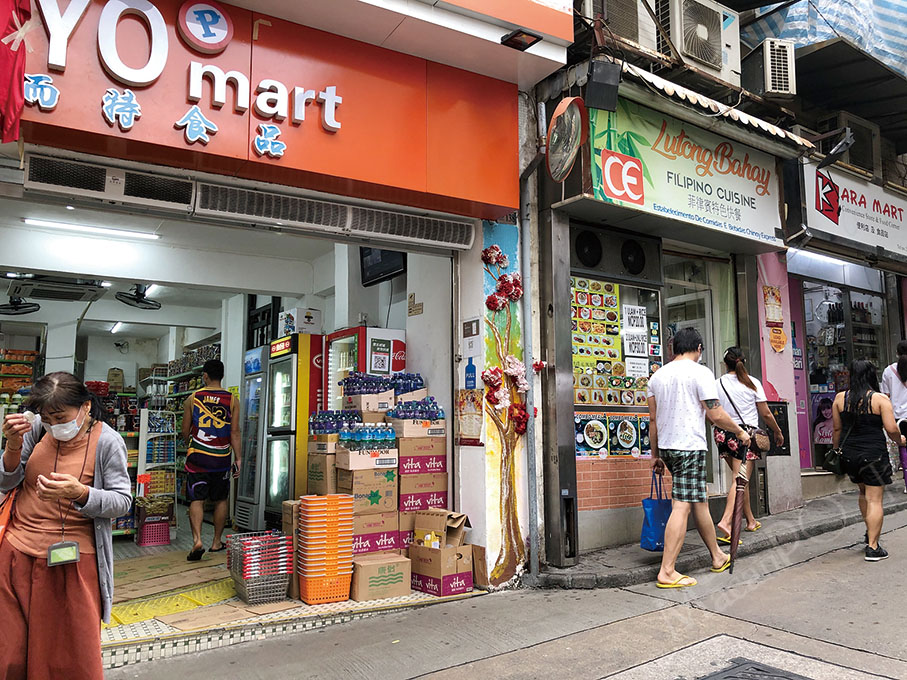
Pedestrians walk past Filipino shops in Rua dos Cules early this month. Photos: Swallow Xu
Without tourists around, the COVID-19 pandemic gives us a rare chance to see clearly who is still living, working and contributing to the Macau Special Administrative Region (MSAR). Strolling across the city centre from San Ma Lou [Avenida de Almeida Ribeiro], Senado Square [Largo do Senado], St Paul’s Ruins and Praia Grande, to Rua do Campo, I find Tagalog-speaking Filipinos sometimes outnumber locals. They gather in groups chatting, eating and drinking. The area around Rua dos Cules (the street opposite the IAM [Municipal Affairs Bureau] Park Lane car park leading up to the Jornal “Va Kio” newspaper) and Rua da Alfândega has become a de facto Little Philippines, where Filipino bakeries, groceries, eateries and hair salons have mushroomed.
I had my hair done on Monday at a Filipino salon, near Ho Tung Library, by an attentive hairdresser, who looks genderless but is very professional and absorbed in his work. Unlike at a Chinese equivalent in Macau or Zhuhai where the “sifu” (‘master’, senior hairdresser) takes care of the design and setting, leaving non-technical parts like shampooing, colouring, and blow-drying to apprentices, this hairdresser did the whole job from start to finish. So this Filipino hair salon brings to Macau their way of doing things – less labour intensive. Here, my head and hair did not have to adapt to different hands like in a Chinese salon LOL; the background music is welcoming, unlike the kind of drum & base, techno or electro music played in most Chinese hair salons. It felt good, this experience. Regardless of background, sexual orientation and beliefs, humans can get along and benefit each other.
But I never saw a Chinese, Portuguese or Macanese – who are supposed to be the three largest local ethnic groups – client here. Very few locals would want to try Filipino businesses despite their much stronger presence in town, after the decline of the Thai street in Rua de Abreu Nunes near Praça do Tap Seac. Maybe cross-cultural communication is limited to necessary occasions for work and basic hellos and heys his, if you happen to have a Filipino/Filipina neighbour. The same applies to Indonesians, Vietnamese, Nepalis and Indians who work in Macau.
Viewing this, with every ethnicity keeping to themselves – such is true even among local Chinese, Macanese, Portuguese – just from my personal observation – how can Macau claim the title of a multi-cultural city?
According to the DSEC [Statistics and Census Bureau] demographic statistics for the 4th quarter of 2019, the local population, excluding non-resident workers and non-local students in Macau, reached 555,000, while non-resident workers totalled 196,538 at the end of last year. So the ratio of non-resident/resident population is 7:20, high! Many non-resident workers including those from the mainland and Southeast Asian countries may be doing jobs less desired by locals, being the working backbone of our city. They deserve better, such as a small anti-virus cash handout as proposed by The Macau Post Daily Director Mr. Harald Brüning and others who care, or community facilities where they can comfortably do their chatting, play their guitar, or performance opportunities for them to show talent, and above all, more communication and interactions between locals and non-locals on individual levels as well as on a governmental level and events or platforms to facilitate multi-cultural exchanges between different ethnic groups in Macau.
Our city should live up to the label of ‘a city of multi-cultures’ not on its surface, but deep in its soul.
*The author is a Macau-based travel writer and translator
